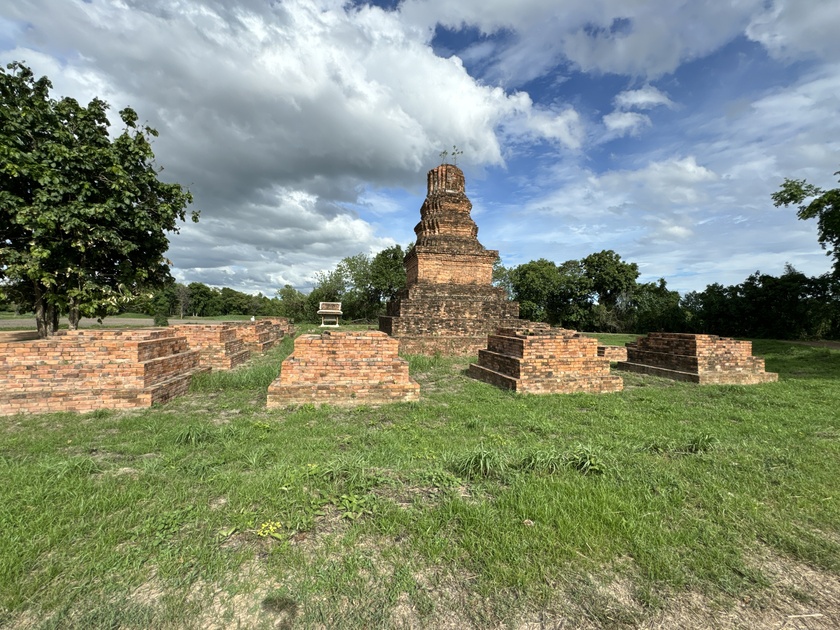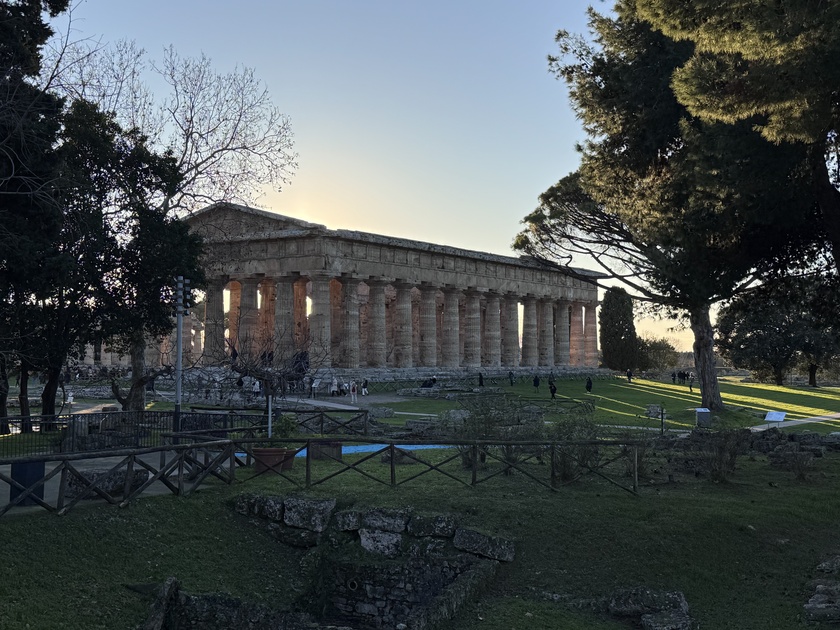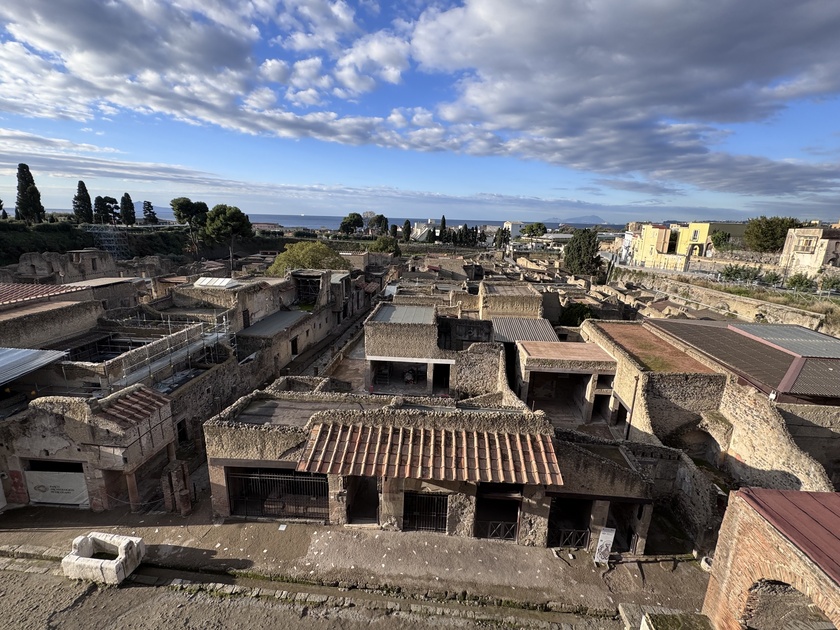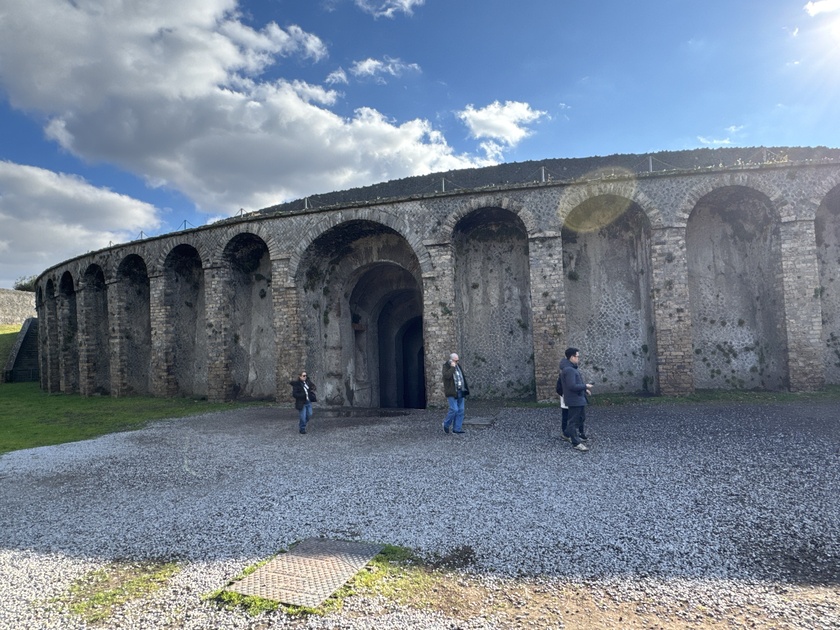Mueang Trai Trueng is a historical town located 18 kilometers south of old Kamphaeng Phet. It was built by King Chaisiri of Chiang Rai who fled invading enemy in 1542 B.E. (c. 999). Today, most of the structures are in disrepair with only ruins of chedis and ramparts.
According to historical records, Mueang Trai Trueng was an old city built in the reign of King Chaisiri King Chiang Rai, who had fled from the enemies in Chiang Rai to build this city.
The ancient town is situated on the west bank of the Ping River and dates to the Dvaravati period (6-11th century A.D.). A large number of Dvaravati objects such as glass beads, fragments of earthenware lamps and unglazed pottery were found on site. Especially the fragments of the lamps, being the same type as those mostly found in the Chao Phraya Basin suggest the prehistoric settlements of Kamphaeng Phet were located on an ancient route between the central plains and areas of the Hariphunchai.
Mueang Trai Trueng became a vassal to Sukhothai once...
The Archaeological Site of Paestum: Ancient Poseidonia’s Magnificent Greek Legacy
Paestum, located in the Campania region of southern Italy about 85 kilometers southeast of Naples in the modern comune of Capaccio Paestum, stands as one of the most extraordinary surviving examples of ancient Greek colonization in Magna Graecia.
Originally founded around 600 BC by Greek settlers from Sybaris as Poseidonia—named after the sea god Poseidon—the city quickly flourished into a prosperous trading and cultural center on the Tyrrhenian coast, benefiting from fertile plains and maritime access.
Conquered by the indigenous Lucanians around 400 BC, who renamed it Paistom, the city retained much of its Greek character while adopting local influences, evident in vibrant painted tombs from this era.
In 273 BC, it became a Roman colony under the name Paestum, receiving new public buildings like a forum, amphitheater, and roads, though the iconic Greek temples remained revered.
Prosperity continued into the ...
Herculaneum, an ancient Roman town nestled at the base of Mount Vesuvius on the Bay of Naples in modern-day Ercolano, Italy, began as a seaside settlement with roots tracing back to legendary founding by Hercules, though historical evidence points to Oscan origins around the 6th or 7th century BC.
Over centuries, it passed through Greek influence, Samnite control in the 4th century BC, and finally became a Roman municipium in 89 BC after the Social War.
Smaller and wealthier than nearby Pompeii, with a population of about 4,000 to 5,000, Herculaneum served as an elegant resort for Roman elites, boasting luxurious villas overlooking the sea, sophisticated architecture, and a prosperous economy tied to trade and fishing.
A severe earthquake in 62 AD damaged much of the town, and repairs were still underway when catastrophe struck on August 24-25, 79 AD.
Unlike Pompeii, which was buried primarily under ash and pumice, Herculaneum lay northwest of the volcano and initially escaped the heaviest fallout due ...
The Ruins of Pompeii: A Frozen Snapshot of Ancient Rome
Pompeii was a thriving ancient Roman city in Campania, Italy, near modern Naples. Founded around the 7th–6th century BC (possibly by the Oscans), it grew into a prosperous port and resort town with a population of about 10,000–20,000 by the 1st century AD. On August 24, 79 AD, Mount Vesuvius erupted catastrophically in a Plinian eruption, ejecting ash and pumice high into the atmosphere before unleashing deadly pyroclastic surges.
The city was buried under 4–6 meters (13–20 feet) of volcanic material, preserving it remarkably well—streets, buildings, frescoes, artifacts, and even casts of victims in their final poses.
This rapid burial created one of the world’s best-preserved ancient sites, offering unparalleled insights into Roman daily life: homes with gardens, bakeries with loaves still in ovens, theaters, baths, brothels, and graffiti on walls.
Rediscovered in the late 16th century and systematically excavated from 1748, ...















































